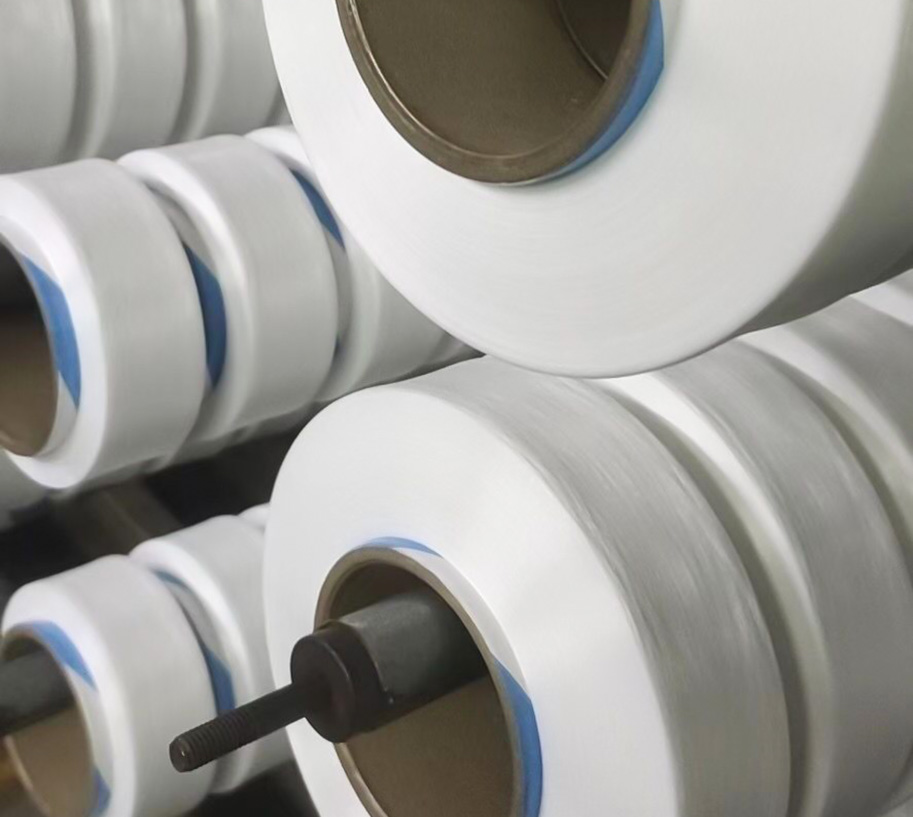Pink/Rose Red/Red China 150D/48F Dty Polyester Yarn High Strength AA Grade Textu...
See Details
If you're a crafter, you've probably heard about Denier, the unit of measurement used to measure the thickness of a yarn. However, many of us don't fully understand the terminology. Denier is a unit of thickness that describes the density of a material, and there are two basic types: Intermingle and Non-Intermingle. This article will introduce Denier, explain what it means, and how to choose the right one for your needs.
Denier is a unit of measurement used to quantify the thickness of yarn
In textiles, the denier is a measure of the heaviness of the fibers. The higher the number, the thicker the fiber is. Denier is a measurement in grams and is closely related to the thickness of a yarn. A strand of yarn that weighs exactly one gram is one denier, but people aren't able to weigh nine kilometers of thread. So, the denier measurement was created to measure silk, but it has found a home in the fiber industry as a measure of the thickness of polyester yarn.
Using this standard, manufacturers can accurately determine the amount of material needed for a certain application. This measurement is called denier count and is very important for the manufacture of durable materials. It describes the thickness of the individual threads and filaments. Denier-counted fabric is thick, whereas fabrics with low denier count are lightweight, thin, and transparent. A good guideline is to choose materials based on their denier count when shopping for fabrics.
There are several ways to measure the thickness of fabric. Denier is the common unit of measurement in the United States and Continental Europe, while Tex is commonly used in the US and Canada. Another measure of linear density is g/yard, or gr/yard. The latter, also known as spinning count, measures the thickness of polyester yarn by counting the number of 300-yard lengths per pound of yarn.
Denier yarn can be made with combination of Intermingle points
The polyester thread is produced using the latest Machinery and includes bright or semi-opaque polyester chips. It is available in different deniers and is often used for sofa fabric, curtains, suits, and prayer carpets. Its combination of intermingle points is used to make various kinds of fabrics, such as 300D Beige Polyester yarn. Besides, the yarn is available in different color options.
The manufacturing process is similar to the production of POY yarn. Its strands are closely matched under heat and stretching operations. The fibers are manufactured in different colors from 50 to 1200. The process of polymerization is continuous, and all the crucial yarn properties are closely monitored. The fibers can be twisted and sized using a combination of intermingle points and other techniques.

DTY yarns are twisted using different heating techniques. One Heater DTY is softer and stretchable than the other two. Another type of DTY is Catonic DTY. It is made from recycled PET chips and is used primarily in blankets and other fabrics. It has a higher knot count than the other two. It has the same stretch factor as 300D Beige polyester yarn and is available in different color combinations.
Denier yarn can be made with non-intermingle
Intermingle is a term used to describe a thread with a dense network of fibers. Intermingle is used to make upholstery fabrics, curtains, shirt, and worsted, as well as sportswear, and has numerous applications in the clothing industry. It is highly resistant, has high stretchability, and can be manufactured in both white and colored varieties. A variety of deniers are available, including lattice duke and high-intermingle yarn.
Drawn textured yarn is a type of woven polyester fabric that is characterized by draw textured characteristics. It is used for curtains, lace fabrics, women's t-shirts, sewing thread, and embroidery. It is also used to make shaggy Machine carpets, sacks, and luggage. Its texture makes it a choice for textured fabrics.
FDY polyester yarns can be produced in two main ways. Some yarns can be dyed using conventional methods while others can be done by dope dyeing. FDY yarns are more environmentally friendly because of their low dyeing temperature. Quick Dry yarns offer enhanced water permeability, which enables the fabric surface to dry quickly. These yarns are widely used in active sportswear and home textiles. Another type of polyester yarn is Side by Side, which has three types of cross-sections and a flat, pentagonal, and hexagonal cross-section.